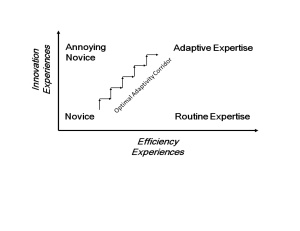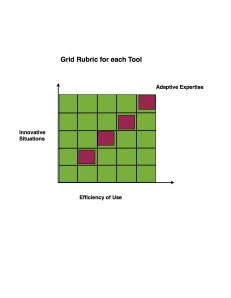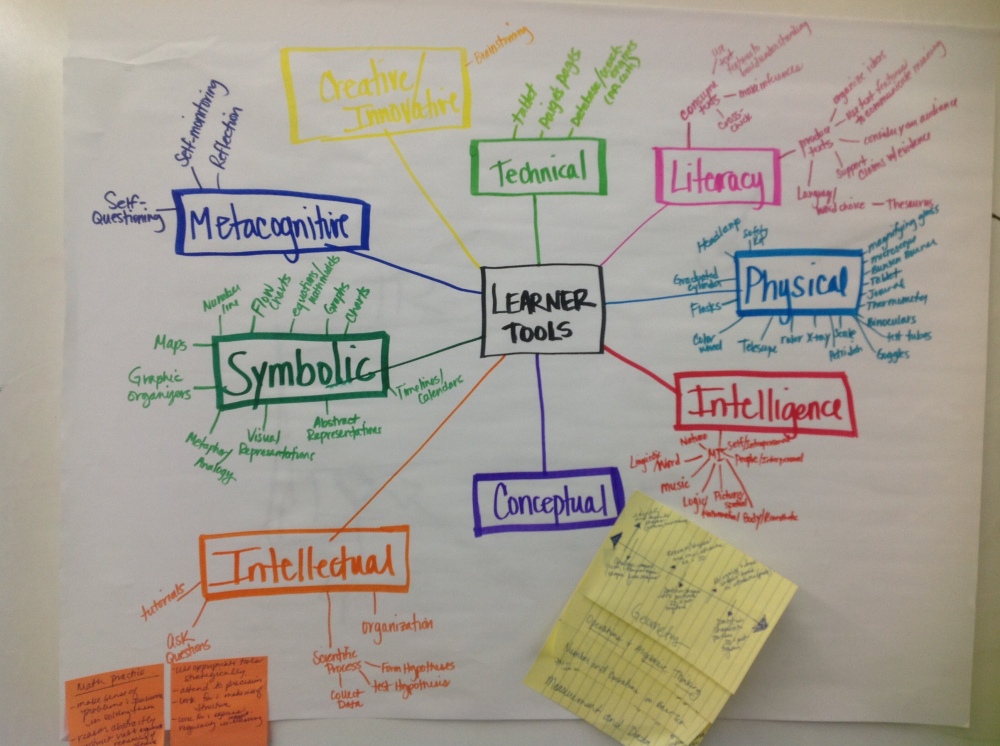Maggie, Mike, and Bunsen started as a fun way to use science tools to help kids do science. We anthropomorphized each tool and gave them a name and a unique personality. 
As the project developed we discovered that our idea of “Tool” was bigger than just the physical tools used in a science lab. We realized that there were many other kinds of tools used to “do science and engineering” and to “learn,” and we wanted to include these in our project. Thus began a rigorous process of development (which is ongoing).
First we brainstormed every kind of TOOL that we could think of with respect to “doing science and engineering” and to “learning.” Then we began to consider the following questions…
- What kind of tools were necessary to do science and engineering and to learn and did we have an exhaustive list?
- How do we organize these tools into logical categories to increase the chance of children understanding them?
- What does it mean to understand how to use each tool? And how do we measure one’s ability to use it?
- What does expert use of this tool look and sound like? And more importantly how does this look and sound for an 8yr. old (approx 2nd grad)?
- What does approximation look like for each tool? If a learner/player is 1/2 way to understanding of this tool and using is well, what might that look and sound like?
- What kinds of experiences require the use of this tool and how do these experiences translate to a technological game space?
- In order to be developmentally appropriate and based on learning trajectory research, in what order to we “teach” the use of these tools?
- What does scaffolding the learning to use each tool look and sound like (to offer support as needed) and how do we embed that into the game space?
- How do we portray different kinds of tools (both for clarification for the learner/player, and so we don’t have 200 different characters)?
- How do the different kinds of tools interact with each other? with our narrative human characters? with our overall game narrative? etc.
- Why address any of this at all? What is the purpose for us to include these other “tools?”
If all we were ever gonna be was an episodic show (distributed either through TV, cable, or the internet) then most of these questions were irrelevant. But since we moved from simple show to multi-level complex game driven by story but covering K-2nd grade STEM standards and Literacy and math Common Core, then we must consider the above.
As we explore each of these questions, I will keep you posted, as I feel it is very important you understand both our underlying philosophy about “Tool Use” and how each tool will be represented in our overall game.



